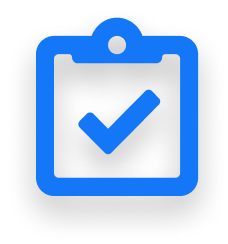Piping Walkdown Checklist
A piping walkdown checklist is used in industrial construction to assist the inspector in verifying that piping systems are built and installed correctly. The checklist functions as a to-do list, and ensures a thorough walkdown of all aspects of the piping system per written procedures and best practices.
What is the Purpose of a Walkdown?
The piping walkdown involves physically inspecting all aspects of the piping system while walking along it on-site to ensure all components, connections, and configurations align with the approved piping and instrumentation diagrams (P&IDs), isometric drawings, and project specifications.
A proper walkdown helps to find and correct issues with the piping system before operation and helps multiple departments accomplish the following objectives:
Quality: Ensures the piping system meets design and regulatory requirements.
Safety: Identifies potential hazards or installation errors before system commissioning.
Commissioning: Confirms the system is ready to be commissioned and put into service.
Documentation: Provides a record of inspection for project handover and future audits.
Pre & Post Pressure Testing Walkdowns
There are certain activities that cannot be completed until the pressure testing of a piping system is complete. Furthermore there are some activities that have to be done so that a piping system is ready to be properly pressure tested. As a result a Pre-Test and a Post-Test walkdown need to occur.
The following sections are key components of a Piping Walkdown Checklist…
General / Header
Header Fields: Document Title, company logo, document number, doc control features, page numbers, etc…
Common fields: Project Name, Project Number, Location, Jobsite, Date of inspection, System, Fluid, Line Number, PO Number, Owner, Unit/Building.
Include fields for reference documents: P&ID No., Isometric Drawings, Specifications.
Piping Installation
Piping installation matches isometric drawing & P&ID
Piping routing, alignment, orientation, and elevations
Pipe material, size, wall thickness match isometric drawing bill of materials (BOM)
Slope in piping and/or drainage lines are installed properly as required
Checking piping alignment between connections, especially as it attaches at equipment
Pipe Supports
Pipe supports, hangers, spring cans, anchors, guides, wear pads, etc. are installed correctly
Adequate support and proper spacing of supports per drawing
Supports and guides are properly installed to allow for the designed thermal expansion and contraction
Welding
Visual inspection of welds performed as required, before and during walkdown
Welding documentation shows that approved welding procedures were used
The correct preheats and filler metals were used for the welding, per the approved WPS
Review and verification of required NDE/NDT with the NDR reports included in package
Welding documentation is included in the package as required
Bolting
Correct material, size and rating of gaskets, seated properly
Correct bolt/stud, length, material, and diameter
Proper lubrication of bolting assembly per manufacturer or owner specifications
Alignment of flanges are within tolerance
Proper tightening sequence and torque was applied per requirements
Bolting documentation (Torque sheet) is included in the package as required
Fittings & Components
Fittings, flanges, elbows, tees, eccentric & concentric reducers installed correctly
Proper rating and/or schedule of installed fittings and components
Inspect flange face integrity on exposed surfaces not already bolted up
Valves
Flow direction is verified
Valve type, size, orientation, and proper operability confirmed
Valve tags exist and are checked for correctness
Confirm the correct valve trim per the isometric drawing
Instrumentation
Instrumentation is properly installed and tightened
Correct tagging or permanent labeling of instrumentation
Proper installation of vents, drains, and sample points verified
Cleanliness
Confirm the piping system is free of debris, dirt, or foreign materials
If special cleaning requirements exist such as internal blasting, or chemical cleaning ensure that those methods were completed, including internal visual inspection using white light or black light was required
External chemical cleaning such as passivation or pickling is complete if required
Air blowing or water flushing completed as required
Pressure Testing
Welding and NDE are complete
If required welds are not coated for pressure testing
Pressure sensitive valves or instrumentation are removed for testing
Correct pressure testing medium is used (Water/Hydro or Air/Pneumatic
Required testing pressure was achieved for the necessary duration
Calibrated test gauges were used during the test
Proper flushing and drying occurred post test
Reinstatement
Temporary components related to pressure testing are removed
Pressure sensitive valves, components, or equipment removed or not installed before testing are installed
Pressure testing blind are removed, and flanges bolted up
Vents and drains are properly plugged or closed as required, sometimes including seal welding and NDE
Coating
Proper material preparation was performed to ensure adhesion of coating system
Proper coating system used on piping
Proper DFT dry film thickness of each layer, and the finished coating system is acceptable
Proper color per drawing or specification requirements
Complete coverage is verified, visually or by holiday/pinhole testing
Tracing
The correct electrical heat tracing or steam tracing is installed
The tracing system is properly installed and attached by the correct fasteners
Installation of tracing has not damaged the coating system
Insulation
Insulation is of the correct material
Insulation thickness is per drawings or specifications
Insulation coverage is complete
Punch List
Incomplete or incorrect items are placed on the walkdown punch list
Punch List items are often ranked by severity and at which phase of the process that they have to be resolved by.
Pre-hydro or before Pressure Testing
Pre-Commissioning
Pre-Operation

